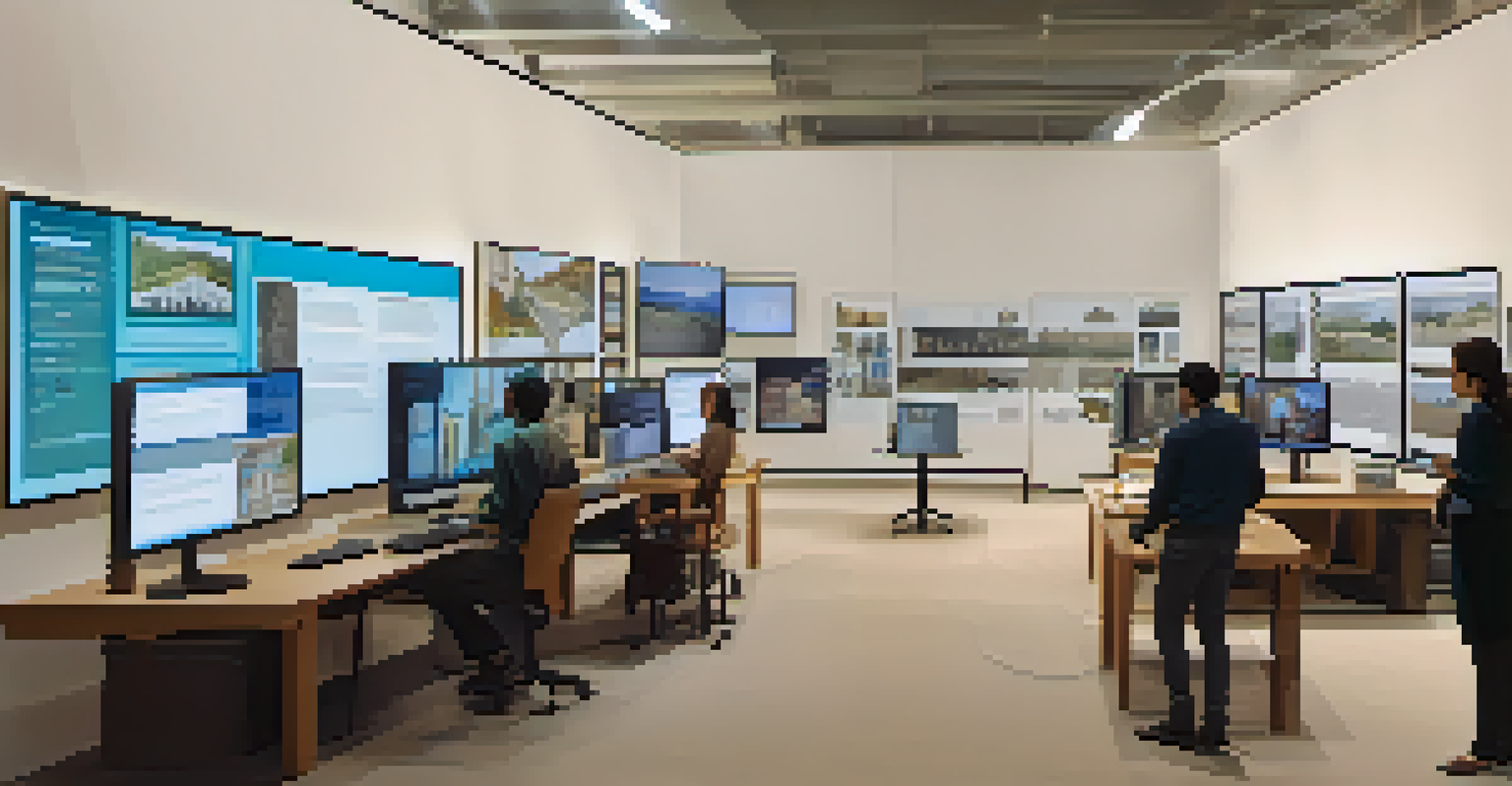Community Involvement in Heritage Conservation Efforts

Understanding Heritage Conservation and Its Importance
Heritage conservation is the practice of preserving sites, artifacts, and traditions that hold historical significance. These elements connect us to our past, telling stories of our culture and identity. By conserving heritage, we not only protect our history but also foster a sense of belonging within communities.
Heritage conservation is not just about preserving the past; it's about building a bridge to the future.
When communities take an active role in conservation, they ensure that the history preserved is relevant and reflective of their unique narratives. This localized approach helps highlight the values and traditions that truly matter to the people who live there. In essence, community involvement enriches the conservation process by embedding personal stories within the larger historical context.
Moreover, heritage conservation can serve as a catalyst for economic development, tourism, and education. When communities engage in conservation efforts, they not only safeguard their heritage but also create opportunities for sustainable growth. This symbiotic relationship between conservation and community engagement is vital for long-term success.
The Role of Community Engagement in Conservation Projects
Community engagement is crucial for successful heritage conservation projects. It involves actively involving local residents in decision-making processes, ensuring their voices are heard and valued. By fostering collaboration, communities can address specific needs and concerns related to their heritage sites.

For example, when a local historical society collaborates with residents to restore a historic building, the project gains both insight and support from those who cherish the site. This partnership can lead to innovative solutions that might not emerge in a top-down approach. It empowers locals, making them feel invested in the outcome.
Community Engagement Drives Success
Active participation of local residents in conservation projects ensures their voices are valued and leads to more effective outcomes.
Additionally, engaging communities in conservation fosters a sense of ownership and pride. When people feel responsible for preserving their heritage, they are more likely to participate actively in its protection. This shared commitment can lead to a stronger, more vibrant community identity rooted in shared history.
Benefits of Local Knowledge in Heritage Conservation
Local knowledge is an invaluable resource in heritage conservation efforts. Residents often possess unique insights about the history, traditions, and significance of their heritage sites. By tapping into this reservoir of information, conservation projects can become more accurate and meaningful.
Communities that engage in the preservation of their heritage create a sense of belonging and identity that enriches their lives.
For instance, local artisans might be familiar with traditional building techniques that are vital for restoring historical structures. Their skills and knowledge can greatly enhance the authenticity of the restoration process. When conservationists collaborate with locals, they create a richer, more nuanced understanding of the heritage being preserved.
Moreover, incorporating local knowledge encourages the transmission of cultural practices and traditions to future generations. This not only helps in conserving physical heritage but also ensures that intangible cultural elements, such as stories and rituals, are kept alive and celebrated within the community.
Case Studies: Successful Community-Led Conservation Efforts
Numerous successful examples showcase the impact of community-led conservation efforts. One notable case is the revitalization of the historic town of Gjirokastër in Albania, where locals have spearheaded restoration initiatives. Their involvement has not only preserved the town's unique architecture but also strengthened community ties and encouraged tourism.
Another example can be found in the preservation of indigenous heritage in Australia, where Aboriginal communities have taken the lead in managing their cultural sites. This empowerment has resulted in more respectful and culturally sensitive conservation practices, allowing traditional knowledge to guide the process.
Local Knowledge Enhances Authenticity
Tapping into the unique insights of community members enriches heritage conservation efforts and preserves cultural practices.
These case studies highlight the effectiveness of engaging communities in conservation. Through their leadership, these efforts not only protect heritage but also foster a sense of pride and ownership among residents, ensuring that their history is honored and celebrated.
The Challenges of Community Involvement in Heritage Conservation
While community involvement is vital, it is not without its challenges. One major hurdle is the potential for conflicting interests among community members. Different perspectives on what should be preserved can lead to disputes, complicating the conservation process.
Additionally, communities may lack the resources or expertise needed for effective conservation efforts. Limited funding, training, and technical knowledge can hinder their ability to manage projects successfully. Addressing these gaps through partnerships with organizations can provide the necessary support.
Despite these challenges, fostering open communication and collaboration can help mitigate conflicts and build consensus. By creating a platform for dialogue, communities can work towards shared goals, ensuring that everyone's voice is considered in the conservation journey.
The Role of Technology in Community-Driven Conservation
Technology plays a pivotal role in enhancing community-driven heritage conservation efforts. Digital tools can facilitate communication, allowing community members to share their ideas and collaborate more effectively. Platforms like social media can help raise awareness and garner support for conservation initiatives.
Moreover, technology can assist in documenting and preserving heritage sites through virtual tours or digital archives. These resources not only engage the community but also attract a wider audience interested in learning about local history. As a result, technology can bridge the gap between the past and the present.
Technology Supports Conservation Efforts
Digital tools facilitate collaboration, raise awareness, and empower communities to engage in the conservation of their heritage.
Additionally, technological advancements can help in training community members. Online workshops and resources can provide valuable knowledge about conservation techniques, empowering locals to take charge of their heritage. This blend of tradition and innovation can lead to more sustainable conservation practices.
Looking Ahead: The Future of Community Involvement in Conservation
As we look to the future, the importance of community involvement in heritage conservation will only continue to grow. As urbanization and globalization threaten local identities, communities must take an active role in safeguarding their heritage. This proactive approach ensures that unique stories and traditions are not lost.
Furthermore, fostering intergenerational collaboration can ensure that knowledge and passion for heritage conservation are passed down. Engaging younger generations can infuse new ideas and energy into conservation efforts, creating a more dynamic approach. This collaboration is essential for keeping heritage relevant in a rapidly changing world.

Ultimately, the future of heritage conservation lies in the hands of communities. By embracing their power and responsibility, they can shape their narratives and protect their legacies for years to come. Together, communities can build a brighter future rooted in the rich tapestry of their heritage.